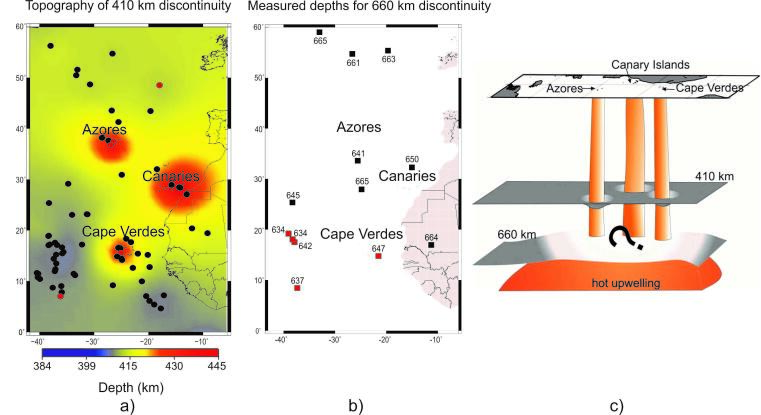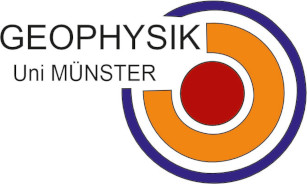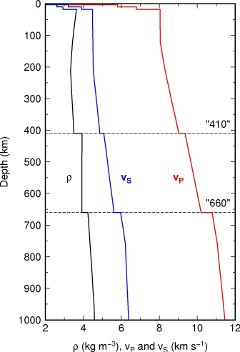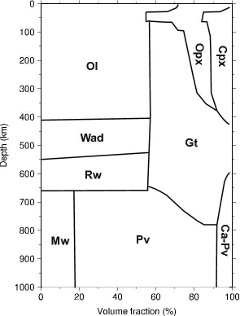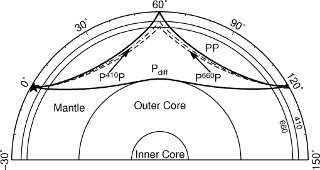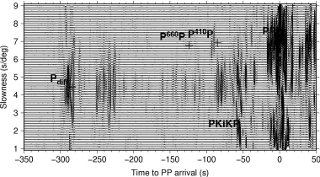Topography of upper mantle discontinuities beneath the North Atlantic using precursors to PP and SS waves
We are mapping the topography of upper mantle seismic discontinuities beneath the North Atlantic and surrounding regions by using precursor arrivals to PP and SS seismic waves that reflect off the seismic discontinuities. Numerous source-receiver combinations have been used in order to collect a large dataset of reflection points beneath our investigation area. We analysed over 1700 seismograms from MW>5.8 events using array seismic methods to enhance the signal to noise ratio. The measured time lag between PP (SS) arrivals and their corresponding precursors on robust stacks are used to measure the depth of the transition zone boundaries. The reflectors’ depths show a correlation between the location of known hotspots and a significantly depressed 410 km discontinuity indicating a temperature increase of 50-300 K compared to the surrounding mantle (Figure 1.a). For the 660 km discontinuity three distinct behaviours are visible: i) normal depths beneath Greenland and at a distance of a few hundred kilometres away from known hotspots, ii) shallower 660 km discontinuity compared with the global average value near hotspots closer to the Mid-Atlantic Ridge and iii) very few observations of a 660 km discontinuity at the hotspot locations (Figure 1.b). We interpret our observations as a large upwelling beneath the southern parts of our study region, possibly due to the South Atlantic convection cell. The thermal anomaly may be ponding beneath the endothermic 660 km phase transformation and likely does not extend through the top of the transition zone as a whole, except for those branches which appear as the thinner upwellings of Azores, Canaries and Cape Verde hotspots at the surface (Figure 1.c).
